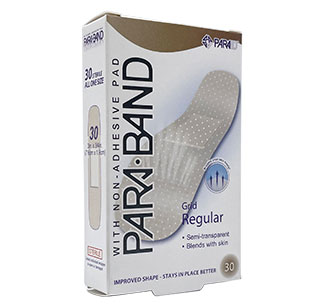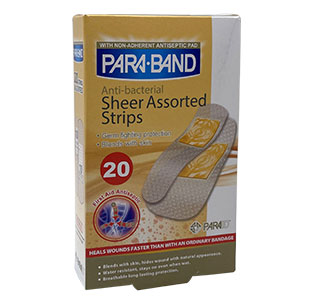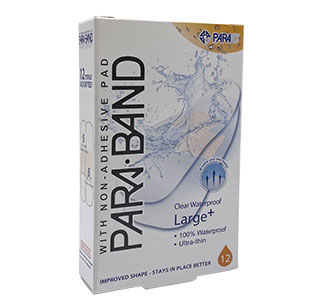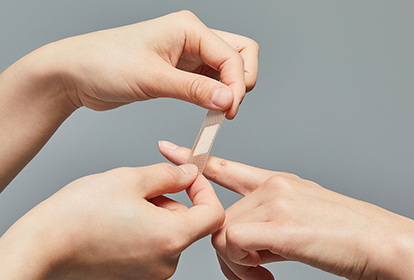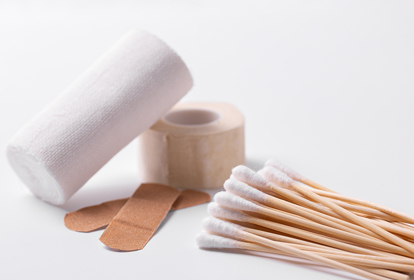Understanding Different Types of Casts
When dealing with an injury that requires a cast, it's crucial to understand the different types of casts available. This knowledge helps in choosing the right waterproofing solutions for showering. Casts vary based on materials and design, each with its own set of features and considerations.
A. Plaster Casts
B. Synthetic Casts
Features:
Lightweight: Easier to carry and less cumbersome.
Quick Drying: Takes only a couple of hours to dry.
Color Options: Available in various colors.
Material: Made from lightweight materials like fiberglass or plastic.
Advantages:
Advantages:
C. Cast Braces and Splints
Uses and Differences:
Material: Slabs of plastic or fiberglass.
Use: Temporary measure, often replaced with a full cast.
Application: Held in place with a bandage.
Material: Made from hard plastic, removable.
Use: Often used post-injury or towards the end of the healing process.
Features: Soft pads inside, held in place with Velcro strips.
Cast Brace:
Splint:
| Cast Type | Material | Weight | Drying Time | Water Sensitivity | Use Case |
|---|
| Plaster Cast | Gauze, Plaster | Heavy | 24-48 hours | High | Standard injury |
| Synthetic Cast | Fiberglass | Lightweight | Few hours | Moderate | Light-duty, aesthetics |
| Cast Brace | Plastic | Variable | N/A | Low | Post-injury, end-stage |
| Splint | Fiberglass | Variable | N/A | High | Temporary, initial |
Waterproofing Solutions for Casts
Keeping a cast dry while showering or engaging in water-related activities is a challenge. However, several waterproofing solutions are available to protect casts from water. These solutions not only prevent skin irritation and infection but also maintain the integrity of the cast.
Commercial Cast Covers
DIY Methods
Plastic Bags and Rubber Bands: A basic method involving wrapping a cast in a plastic bag and securing it with rubber bands.
Cling Film and Duct Tape: Wrapping the cast in cling film and sealing with duct tape.
Specialized Products
| Solution Type | Description | Reusability | Material | Reliability | Ease of Use |
|---|
| Commercial Covers | Custom-fit, water-tight seal | Yes | Plastic/Rubber | High | High |
| DIY Methods | Basic, improvised covers | Varies | Plastic/Cling Film | Moderate | Moderate |
| Specialized Products | High-quality cast protectors | Yes | Specialized | High | High |
Key Considerations:
Type of Cast: Choose a solution that matches the type of cast (plaster, fiberglass, etc.).
Activity Level: Consider the level of water exposure (showering vs. swimming).
Comfort and Ease: Opt for a solution that balances protection with comfort and ease of use.
Step-by-Step Guide to Covering Your Cast
Effectively covering your cast for showering is essential to prevent water damage, skin irritation, and infection. Here's a detailed guide on how to properly cover your cast, whether it's a plaster or fiberglass cast, using a waterproof cast cover.
Preparing the Cast
Check for Sharp Edges: Ensure there are no sharp parts on the cast that might tear the cover.
Add Padding if Necessary: For extra protection, add padding around sharp or rough areas.
Clean the Skin Area: Ensure the skin around the cast is clean to help the seal adhere better.
Applying the Cover
Choose the Right Size Cover: Ensure the cover is appropriate for your cast type and size.
Stretch the Opening: Gently stretch the opening of the cover to fit over the cast.
Slide the Cover Over the Cast: Carefully slide the cover over the cast, avoiding any twisting or pulling that might damage the cast.
Secure the Seal: Once the cover is in place, ensure the seal is snug against your skin to prevent water from entering.
Ensuring a Water-tight Seal
Check for Gaps: Ensure there are no gaps between the skin and the cover's seal.
Test for Leaks: Before entering the shower, test the seal by lightly applying water to the area.
Adjust as Needed: If you find any leaks, adjust the cover or seal to ensure a tight fit.
Key Points to Remember:
Use the Right Cover: A cover designed specifically for casts will provide the best protection.
Be Gentle: Avoid excessive force when applying the cover to protect the integrity of the cast.
Dry the Cover Post-Shower: After showering, pat the cover dry before removal to prevent water from dripping onto the cast.
By following these steps, you can ensure that your cast remains dry and intact while you shower, reducing the risk of complications associated with wet casts.
Tips for Showering with a Cast
Showering with a cast can be challenging, but with the right techniques and precautions, it can be managed effectively. Keeping your cast dry is vital to avoid skin irritation, infection, and cast damage. Here are some tips to help you shower safely with a cast, whether it's a plaster or fiberglass cast.
Showering Techniques
Avoid Direct Water Contact: Keep the cast away from direct streams of water.
Use a Handheld Showerhead: This allows more control over water flow and direction.
Shower Briefly: Limit your shower time to reduce the risk of water exposure to the cast.
Bathing Alternatives
Sponge Baths: Use a damp sponge or washcloth to clean yourself while keeping the cast completely dry.
Seated Showers: Sit on a shower chair or bench to stabilize yourself and keep the cast out of the water.
After-Shower Care
Dry the Exterior: Carefully pat the outside of the waterproof cover or plastic bag dry.
Check for Moisture: Inspect the edges of the cast for any signs of water penetration.
Remove the Cover Carefully: Gently remove the waterproof cover to avoid disturbing the cast.
Key Considerations for Showering with a Cast:
Use a Waterproof Cover: A specialized cast cover is the most effective way to keep your cast dry.
Seek Assistance if Needed: Don't hesitate to ask for help when showering to ensure safety.
Consult Your Doctor: Always follow your doctor's advice regarding care and precautions for your specific cast type.
Choosing the Right Cast Cover
Selecting the appropriate cast cover is crucial for effectively protecting your cast from water during showering and other activities. Whether you have a plaster or fiberglass cast, the right cover can prevent skin irritation, infection, and cast damage. Here's how to choose the best cast cover for your needs.
Factors to Consider
Type of Cast: Determine if your cast is plaster or fiberglass, as this affects the level of waterproofing needed.
Size and Fit: Ensure the cast cover fits snugly over your cast and against your skin to create a water-tight seal.
Material Quality: Look for durable materials like heavy-duty plastic or rubber that can withstand repeated use.
Top Recommended Products
1. Reusable Waterproof Cast Covers: Designed for multiple uses, these covers offer a reliable seal and comfort.
2. Custom-Fit Cast Protectors: These are tailored to fit the exact shape and size of your cast, providing superior protection.
3. Adjustable Cast Sleeves: Featuring adjustable straps or seals, these sleeves cater to various limb sizes and cast types.
Where to Buy
Medical Supply Stores: A reliable source for high-quality cast covers.
Online Retailers: Convenient options with a wide range of products and customer reviews.
Pharmacies: Some pharmacies stock basic cast cover options.
| Cast Cover Type | Ideal For | Material | Reusability | Water-Tight Seal |
|---|
| Reusable Waterproof | Multiple showers/swims | Plastic/Rubber | Yes | High |
| Custom-Fit Protectors | Specific cast shapes | Various | Yes/No | High |
| Adjustable Sleeves | Different limb sizes | Flexible material | Yes | Moderate |
 English
English
